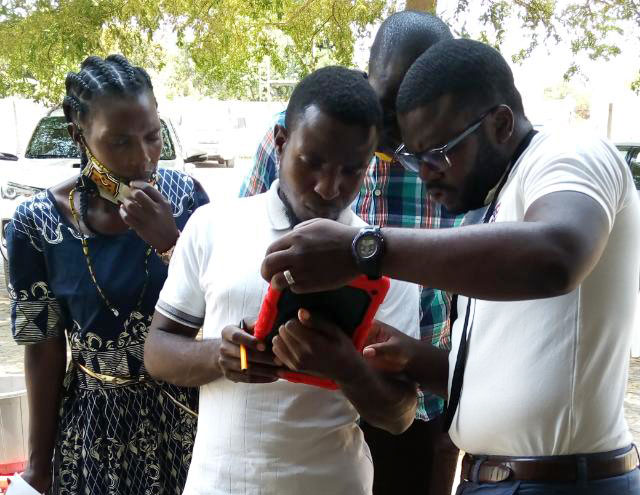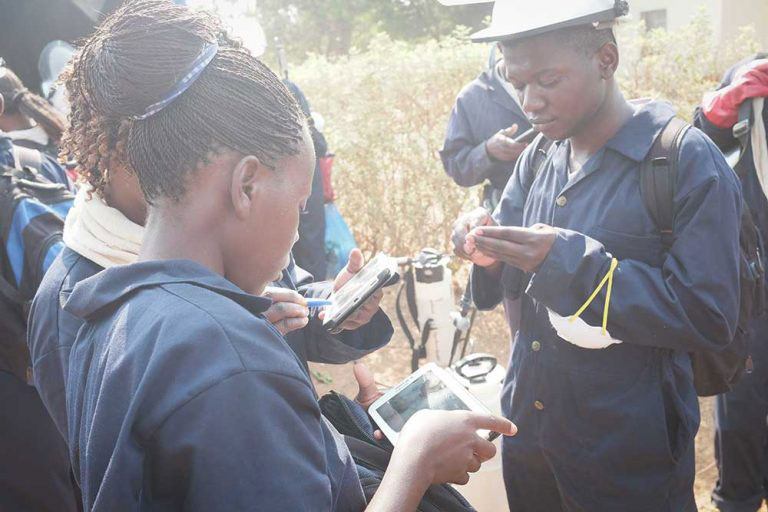Using geospatial mapping to find zero-dose children in Zambia
To ensure that no children are missed, Zambia has been using geospatial mapping to find out exactly where zero-dose children are.
- 14 March 2022
- 3 min read
- by Fiske Nyirongo

Zero-dose children, by definition, are children that haven’t yet been reached by health authorities. The first, most important challenge is finding them.
In Zambia, The International Vaccine Access Center (IVAC) of the Johns Hopkins University Bloomberg School of Public Health, in partnership with Akros Zambia, Macha Research Trust, and the Zambia Ministry of Health, looked to solve this issue using advanced geospatial technology. Akros supported the work by using the “Reveal” platform to identify zero-dose children for a major measles and rubella vaccination campaign
“Other factors like the education level of mothers and belief systems contribute greatly. Also, you will find that some people are not vaccine hesitant as such but they just do not have information about vaccines."
Akros, as an organisation, develops data-driven systems to improve the health and well-being of disadvantaged communities. Reveal is an open-source platform that uses spatial intelligence to drive the delivery of life-saving interventions.

IVAC conducted a prospective study in ten health centre catchment areas in Southern Province, Zambia in November 2020. Two months before the rubella and measles Supplementary Immunisation Activity (SIA), Akros used aerial satellite maps to remotely enumerate household on the ground. The joint research team then used these maps within the Reveal application to survey households and identify zero-dose children.
In addition, after the campaign, these households were targeted for mop-up campaigns to assess whether all the children were vaccinated during the campaign. They used a Bayesian geospatial method to identify factors associated with measles zero-dose and produced fine-scale prevalence maps which identified optimal locations for additional vaccination sites.
Dr Simon Mutembo, a Zambian doctor and assistant scientist in the International Vaccine Access Center at the Johns Hopkins Bloomberg School of Public Health, says: “A host of factors are present in places with zero-dose children. We found that the distance to health centres is a key factor. In other words, the further a health centre is from a certain community or household, the more likely you are to find a zero-dose child in that household.

Have you read?
“Other factors like the education level of mothers and belief systems contribute greatly. During our study we found zero dose children in communities which were not hesitant to receive vaccines but had not been vaccinated because they did not have the correct information about vaccines. When study team visited these communities and gave them information, they accepted to have their children vaccinated.”
Dr Mutembo adds: “Mass vaccination campaigns sometimes miss critical communities. You find that they will reach already vaccinated children and miss out on zero-dose children because health care workers don’t have tools to find these households.”
This is why the work being done by organisation like Macha Research Trust and its partners is important for future vaccination campaigns.

Regarding the research, Dr Mutembo says, “We are currently modifying the study for the second round of research. We want to be more exact in mapping and use existing data sources to map and predict the locations of zero dose children in the community. At the moment, we are waiting for more funding.”
Dr Mutembo mentions that it is unclear whether zero-dose children are found in clusters or not – an area which needs further research.
More from Fiske Nyirongo
Recommended for you






